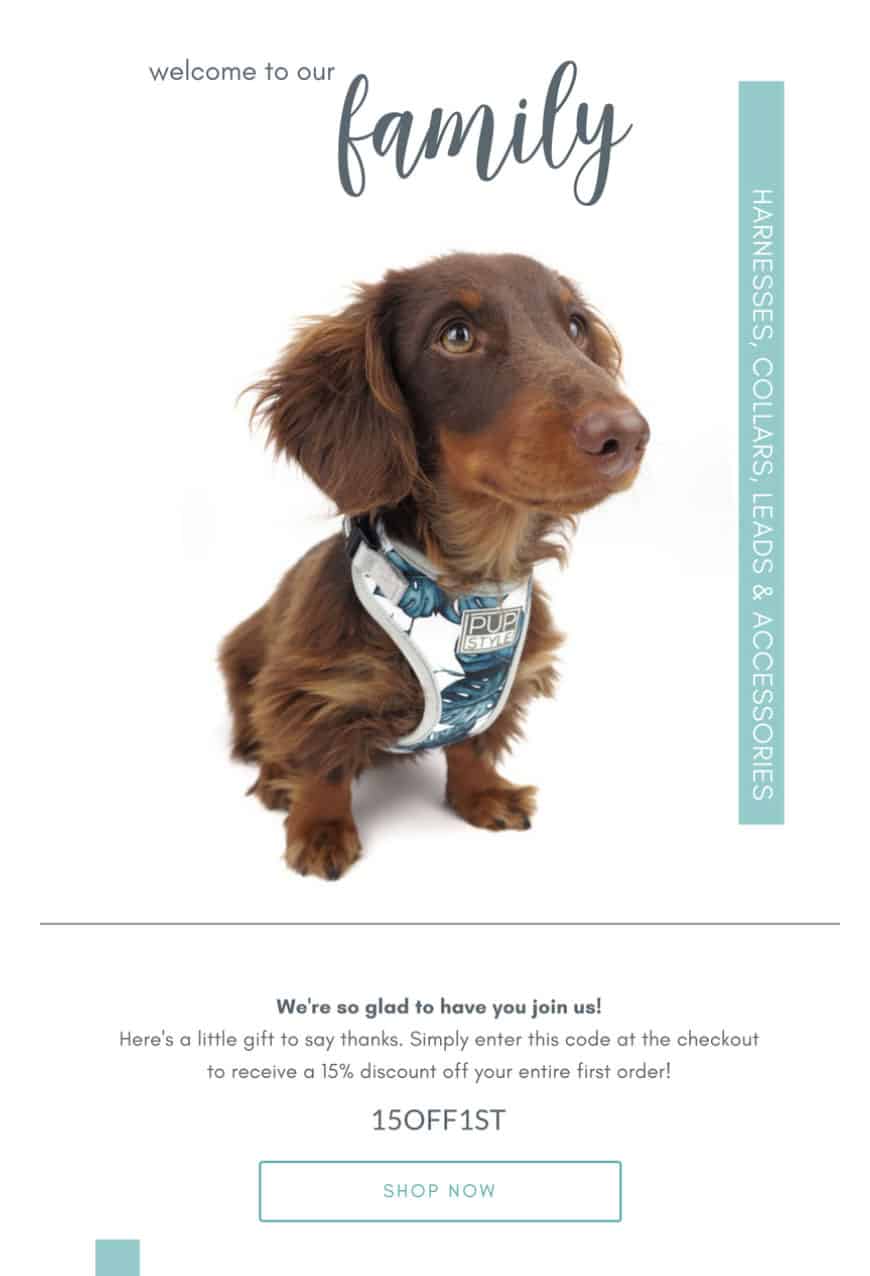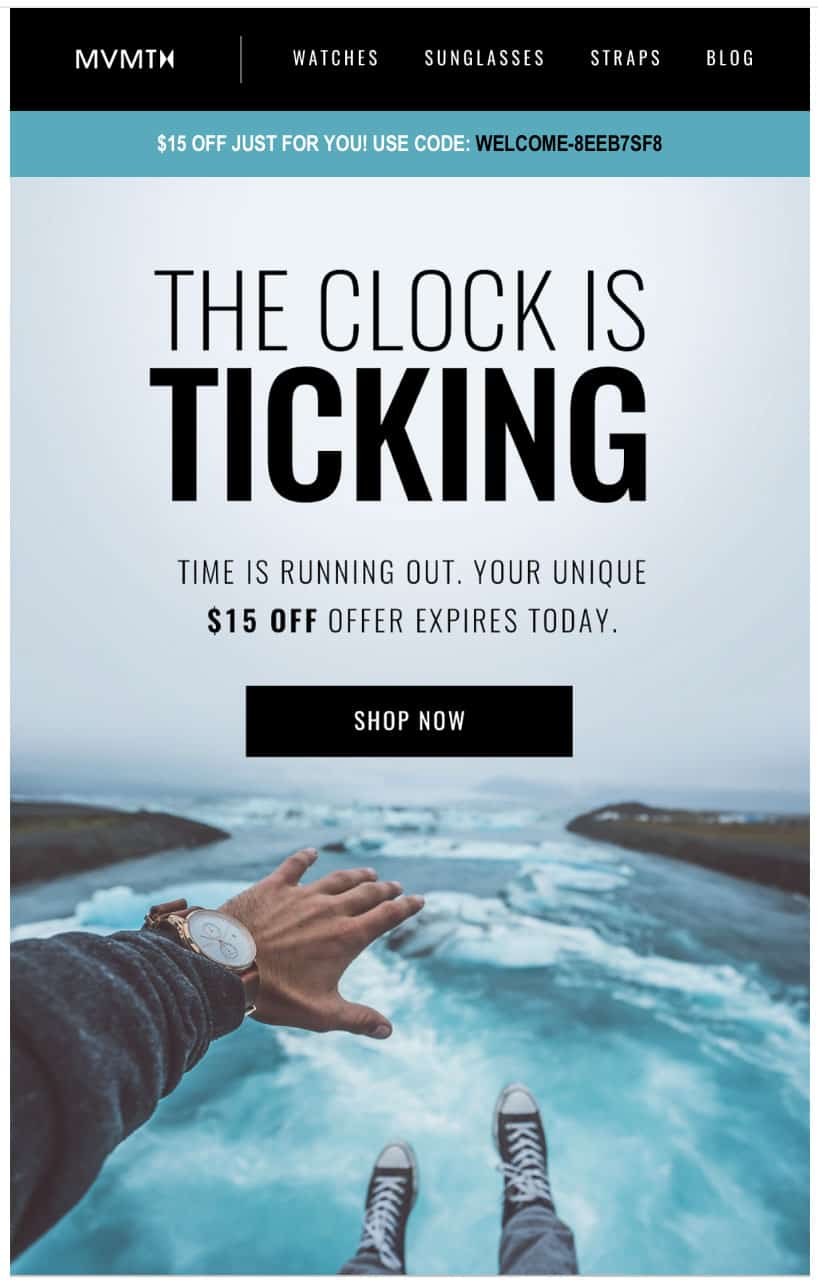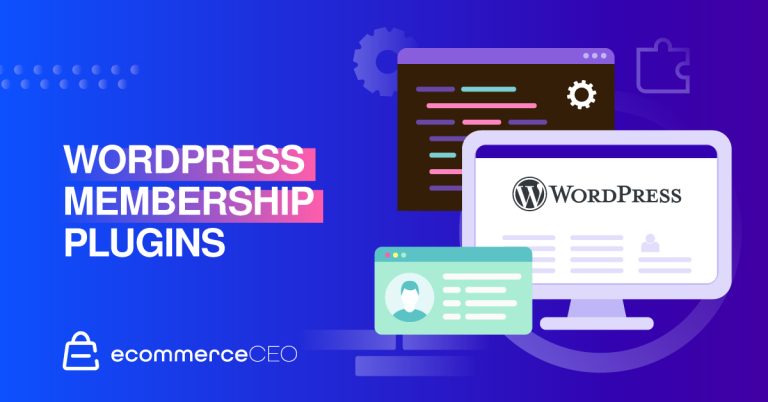If you’re a fan of tactics that generate long-term results but only require a short-term investment, welcome emails might just become your new favorite thing. Their impact is unmistakable: They average over 84% in email opens and 25% in click-through rates.
If you think about it, it’s not too surprising that welcome emails score so high in terms of engagement rates. They’re sent at the right time – right after the user performed an action, like completing a purchase or signing up to a newsletter — they provide reassurance that the signup process went well, and lastly, they often contain valuable information the user has been waiting for.
While welcome emails aren’t necessarily a new tactic, marketers often overlook how much value these messages carry both for their business and their email recipients. In this article, I’d like to suggest five ideas for what you can include in your welcome email campaigns if you’re running an ecommerce business. Showing examples from various brands, I hope to inspire you to pay more attention to these and other triggered emails that, hopefully, one day will become the backbone of your email marketing strategy.
Welcome Emails Idea #1: The Story Behind Your Brand
New email subscribers often don’t know your story. Even if they are fairly familiar with your brand and decided to join your newsletter subscription, it might be worth telling them more about your brand and what you stand for. Provided the story isn’t something like “I wanted to make a lot of money, so I decided to start selling things online,” you can make a good first impression with your welcome email by telling the readers a few words about who you are. Take a look at this example below:

This is a fragment of a welcome email from a company called Ooni. As you might have guessed, they sell pizza ovens you can use outside of your house. But what you couldn’t tell from the screenshot or their website (unless you dug deeper into the copy) is why they’re selling them.
Only when you go over the story in their welcome email, you find out that Ooni’s been set up by someone who loves pizza and was looking for an affordable solution that’ll work even if you don’t have a large outdoor space. Also, you’ll learn that the business had been launched on Kickstarter and finally established, after 18 months of development, in 2013.
What’s inspiring about this story is that, as the subscriber, you immediately know whether you share common values with the brand. You know that their products are affordable, take a limited amount of space, and have likely been backed by thousands of other people on Kickstarter. The benefits are clear, but there’s also a nice, subtle addition of social proof.
Here’s another good example, this time from CAT:

This welcome email isn’t about how or when the brand was established, instead, it tells a story of who it’s driven by — its customers. And, who are their customers? The bold, the innovative, and those who triumph the daily grind.
By joining CAT’s newsletter, you’re not just another subscriber or a record in their email database – you’re part of their crew and you’ll instantly spot other crew members out in the street, as the CAT logo is as iconic as they get.
Welcome Emails Idea #2: The Best Places to Start
Just as your new subscribers might not know your brand’s story, they might also be unfamiliar with the products or product categories you offer. It’s worth getting them up to speed as quickly as possible. Since they’re at the peak of their interest – after all, they’ve just joined your email list – the chances of converting them are relatively high.
Assuming that this is the case, you should make sure that they quickly get onto your site and see some of your best products. Showing a big call to action button that leads to your store is one way to do this. A better one though is to show selected products or product categories your potential buyers should start with. Here’s an example of how MeUndies does it in their welcome emails.

You’ll notice that there are a few things going on in this message: There’s a navigation bar that helps you quickly click through to their store, then some information about their brand’s story, and finally, their recommendation on where you should start your journey. If you didn’t know what products – other than underwear – MeUndies is selling, you’d straight away know what to look for on their site. You won’t get lost or overwhelmed by all the product categories they might have in offer, instead, you’ll start with what they consider the essentials.
A similar tactic has been used by another brand, Huckberry. Take a look:

At first, Huckberry is talking about their brand and how they pick the coolest gear from emerging brands and tell the stories of their makers. While the first call-to-action button is a general one and leads to their store, the interesting part starts further down in the message. They’ve got a separate section with what they call the “Trending Gear.” In other words, it’s either the currently popular products or selected items on sale.
No matter how they go about choosing these products, showing them off is a good way of getting their new subscribers quickly interested in their offering and convincing them to click through to their company’s site. Again, rather than telling the potential customers to browse through their store, they’re simplifying their search process by suggesting selected items.
The use of the word “Trending” in the headline makes it even more appealing. It suggests that other customers find these products interesting and worth looking at and since consumers tend to trust the recommendations of others over advertisers, there’s a good chance they’d prefer to click on them, rather than a generic “Explore the Store” button.
Welcome Emails Idea #3: What Sets You Apart
Your story and what you stand for are two things that set you apart from your competition. But they’re not necessarily the only things that make you unique. Perhaps your Unique Selling Point (USP) is different and not related to your brand’s story at all. For example, it might be related to your business model and how you sell your products like in the case of this mattress selling company, Casper.

Or this company, called MVMT, sells watches in a way that’s cutting out the middleman and their retail markup.

Both of these brands made sure to communicate the USP to their new subscribers quickly. The aim of this tactic is simple: It’s to help overcome the fear of making the first purchase by stressing the free shipping and returns, as well as the ten-year warranty and two-year warranty, respectively, that their customers get. This is critical if you’re seeing that many of your new email subscribers don’t ever complete their first order.
If you’re observing a similar pattern, it could mean that you’re wasting a significant share of your marketing budget on leads that don’t ever become paying customers. Including a message similar to the ones shown above in your welcome email, can help you drive more sales from your new leads. It can also leave you with a decent amount of money that could be invested elsewhere — not to mention the fact that it’ll help you engage your email list more effectively.
Welcome Emails Idea #4: What You Should Expect
Since it’s the first message – one of many they’ll receive from you – it might be worth providing information on what your future emails will be about, when they’ll be sent, and why your customers should care. Let’s explore this idea by analyzing this example from Timberland.

Whenever you sign up to a newsletter, it’s pretty obvious that you’ll be receiving special offers and information on current promotions. What’s less obvious, is that some of these offers are exclusive to newsletter subscribers only and this is a significant benefit if you like buying clothes and trying new styles before anyone else. The same applies if you’re simply looking to save some money when shopping online.
If this hasn’t been communicated well enough on the landing page or the signup form on the brand’s website, the welcome email is the perfect place to include and even repeat all these benefits. As you can see, the same tactic has been used by Puma in the message sent to their new subscribers.

What else could ecommerce brands include in their emails to set their subscribers’ expectations? Here are a few ideas:
- Information on how often and at what times you’re going to send the emails
- What’s coming up in the next message, like if there’s a whole welcome email sequence
- What other types of content they’ll receive such as contests or event invitations
- How the subscribers’ engagement can affect the type of offers they receive
- Who’s going to write and curate the content so they know if there are multiple contributors or if you’re inviting customers to co-create content
Welcome Emails Idea #5: Off to a Good Start
As you’ve probably noticed yourself, most ecommerce brands drive engagement with their welcome emails by including discount codes in them. They eagerly inform everyone who enters their online store that there’s a discount code waiting for those who fill out the form and join their newsletter. It’s a perfectly good tactic, provided that you’re crystal clear about the conditions that need to be met to redeem the discount.
But, if you’re withholding some of the information — for example, that the code only applies if you spend over a specific amount of money — then there’s a significant chance that this tactic will backfire and may generate a large number of spam complaints. That’s why if you decide to offer a discount code to your new subscribers, be sure to communicate how it will work.
Below you can see two examples of brands that added discount codes in their welcome messages. Here’s one from PUPSTYLE:

Notice that this example doesn’t include information about how long the discount code will last. That’s a missed opportunity and including that information could help you generate more sales from that particular message. Another brand, Naturalizer, took a different approach and made sure to communicate that the code will only last for a specific time.

Another good thing about offering discount codes this way is that it gives you another reason to contact those subscribers who don’t take action within the first days of their subscription. This is exactly what MVMT does with this reminder-type of email that’s sent before the customer’s discount code expires.

Provided that you’re able to dynamically segment out those who’ve already converted and bought from your site, this two-message sequence can help you generate a significant amount of revenue and only needs a one-off investment.
Conclusion
Welcome emails are among my favorite types of emails and for a good reason — the average open and click-through rates they score beat other messages hands-down. But, if you combine the ideas I’ve listed above and start experimenting with them, I’m sure you’re going to beat the benchmarks and your competitors, too. While marketers have different ways to win their customers’ hearts — and this article shows it well — as soon as you dedicate some time to create even the simplest welcome campaign you’re going to quickly see that the long-term results are worth that initial effort.






